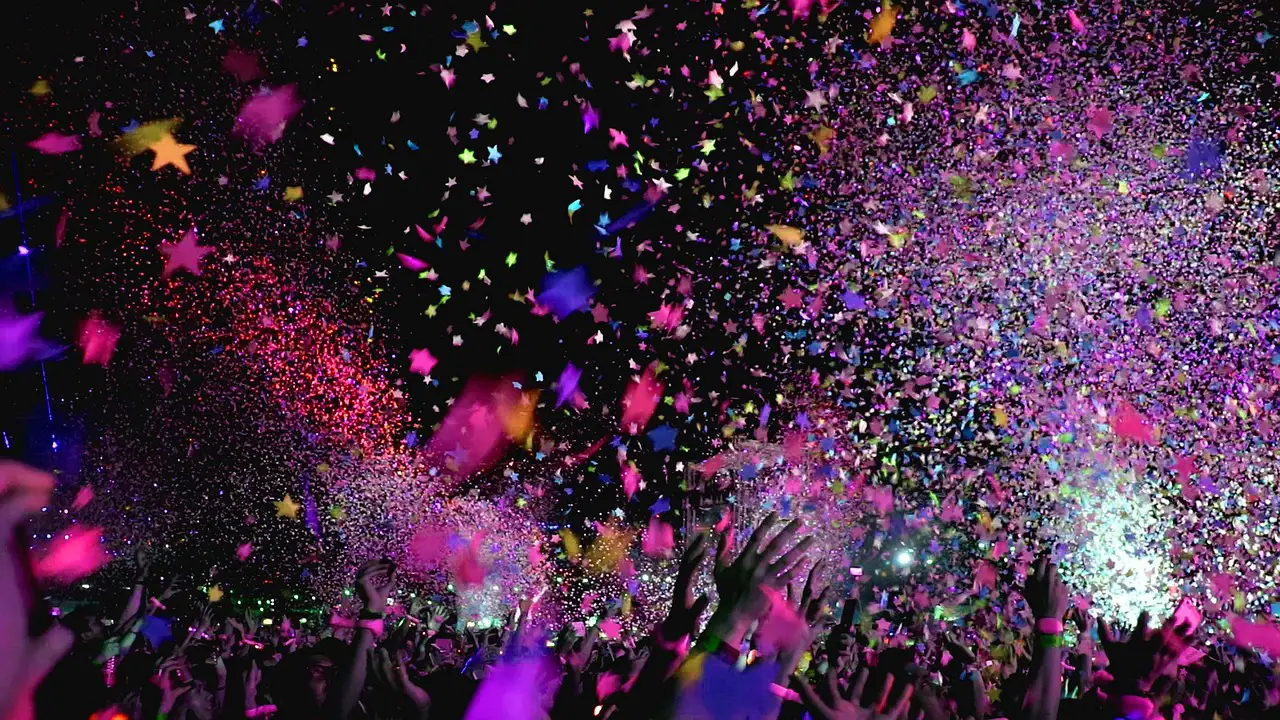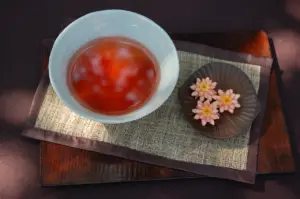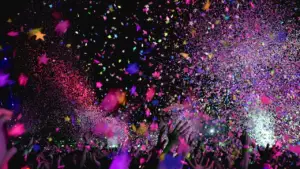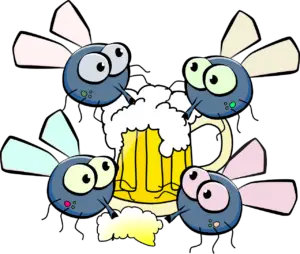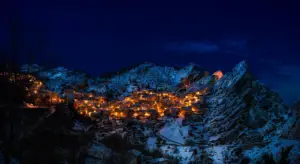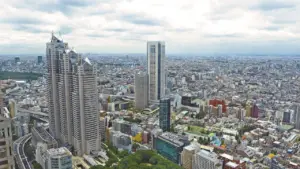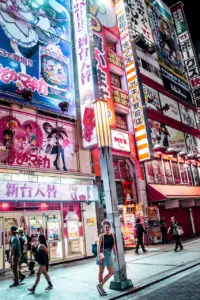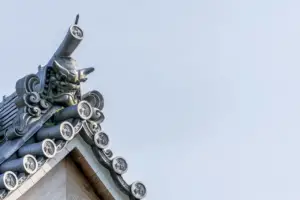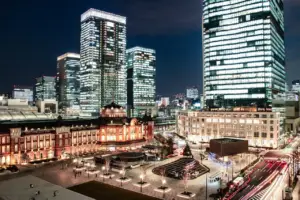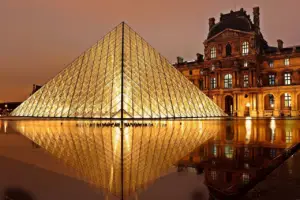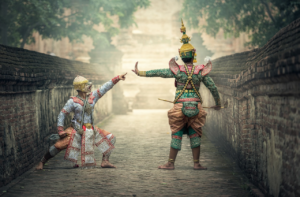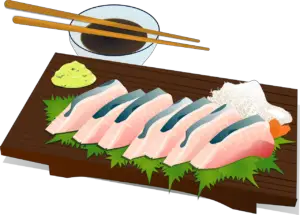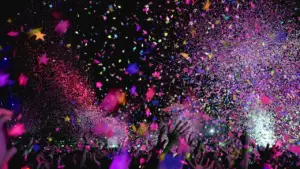Japan is a country that is known for its vibrant and colorful festivals that showcase the country’s rich cultural heritage. One of the most popular festivals in Japan is the Hanami, which celebrates the blooming of cherry blossoms in spring. During this season, the country is filled with a sea of pink and white flowers that create a magical atmosphere. However, what sets Japan apart is the tradition of flower illuminations where the blossoms are lit up at night, creating a breathtaking display of lights.
In this article, we will explore seven spectacular flower illuminations in Japan that are a must-visit for anyone who wants to experience the magic of blossoms in lights. From Mie Prefecture to Hyogo Prefecture, we will take you on a journey through some of the most beautiful and enchanting gardens and parks in Japan.
Each of these illuminations has its unique charm, and we will delve into the history and significance of each event, as well as provide practical information on how to visit these locations. So, get ready to immerse yourself in the world of blossoms in lights in Japan.
Key Takeaways
- Japan has a rich cultural heritage that is celebrated through vibrant festivals and illuminations, such as Hanami and yozakura.
- Nara Park is a popular tourist destination known for its free-roaming deer, historic temples, and stunning cherry blossom illuminations.
- Huis Ten Bosch combines European charm with Japanese beauty and features over 13 million LED lights illuminating the park, including a Flower Road and Canal of Light.
- Japanese street food, such as Takoyaki balls and Taiyaki cakes, and souvenirs, such as traditional pottery and anime figurines, offer a unique and memorable experience for visitors.
Hanami: The Tradition of Flower Illuminations in Japan
The tradition of Hanami in Japan involves the illumination of flowers, which is a visually stunning and culturally significant practice. Hanami, which translates to ‘flower viewing,’is a centuries-old tradition in Japan where people gather to appreciate the beauty of cherry blossoms.
During this time, many parks and gardens across the country are illuminated with colorful lights, creating a magical atmosphere that attracts millions of visitors each year. The practice of illuminating flowers during Hanami dates back to the Edo period (1603-1868), when the ruling class would hold extravagant parties under the cherry blossoms.
Today, the tradition has evolved to include not only cherry blossoms but also other flowers such as wisteria, azaleas, and tulips. The flower illuminations are typically held in the evening, and visitors can enjoy the stunning display of lights while sipping on sake or enjoying traditional Japanese snacks.
The practice of Hanami and flower illuminations is not only a celebration of nature’s beauty but also a reflection of Japan’s rich cultural heritage.
Nabana no Sato, Mie Prefecture
Nabana no Sato in Mie Prefecture features a stunning display of thousands of colorful LED bulbs that creatively illuminate the garden’s natural beauty.
The garden’s main attraction is the Tunnel of Light, where visitors can stroll through a long pathway adorned with LED lights that change colors and patterns.
The tunnel leads to a picturesque scene of a large lake surrounded by cherry blossoms, which are also lit up with colorful lights.
Visitors can also enjoy the flower gardens, which are decorated with LED lights that highlight the natural beauty of the flowers.
The garden boasts a variety of flowers, including tulips, roses, and lavender, which bloom throughout the year.
Additionally, the garden features a large greenhouse that is home to a wide range of tropical plants.
Visitors can also indulge in local food and drinks, such as grilled eel and sake, at the various stalls and restaurants throughout the garden.
Overall, Nabana no Sato is a must-see destination for anyone looking to experience the beauty of Japanese illuminations and nature.
Ashikaga Flower Park, Tochigi Prefecture
Ashikaga Flower Park in Tochigi Prefecture offers visitors the chance to see the world’s largest wisteria garden. The park’s wisteria trellises are illuminated at night, providing a stunning visual display for those who take a stroll through the garden.
In addition to the beautiful flowers, visitors can also enjoy a nighttime symphony of lights and music, creating an immersive experience that is sure to be memorable.
See the World’s Largest Wisteria Garden
Visitors can witness the magnificent displays of wisteria blossoms in full bloom at the Kawachi Fuji Gardens in Kitakyushu, Japan. The garden is home to over 22 different species of wisteria, including the rare double-petaled wisteria, which can only be found in a few other places in the world.
The gardens are spread over an area of 10,000 square meters and are carefully designed to highlight the beauty of these delicate flowers. The best time to visit the Kawachi Fuji Gardens is during the wisteria season, which typically runs from late April to mid-May.
During this time, the garden is transformed into a colorful wonderland with thousands of wisteria blooms hanging from trellises and cascading down walls. Visitors can take a leisurely stroll through the garden’s many pathways and tunnels, each adorned with different shades of purple, pink, and white wisteria blooms.
The Kawachi Fuji Gardens are truly a sight to behold and offer visitors a once-in-a-lifetime experience that they will never forget.
Take a Stroll on the Illuminated Wisteria Trellises
The Kawachi Fuji Gardens offer a unique experience for those who enjoy walking through illuminated trellises adorned with wisteria blooms. The garden, located in Kitakyushu, Japan, features two tunnels made of trellises that are covered in cascading flowers. The wisteria flowers come in different colors, including white, pink, and purple.
The tunnels are lit up during the annual Wisteria Festival that takes place from late April to early May, attracting thousands of visitors from around the world. Visitors to the garden can take a leisurely stroll through the tunnels, being surrounded by the sweet fragrance and vibrant colors of the wisteria blooms. The illuminated trellises create a unique and enchanting atmosphere, making the garden a popular spot for photography.
To fully appreciate the beauty of the wisteria blooms, visitors can sit on the benches provided and take in the stunning view. The peaceful and serene setting of the garden, coupled with the magnificent display of illuminated wisteria trellises, make the Kawachi Fuji Gardens a must-visit destination for anyone traveling to Japan.
Enjoy the Nighttime Symphony of Lights and Music
One can experience a mesmerizing fusion of light and music at the night symphony in a famous Japanese garden. The garden, known as Nabana no Sato, features a stunning display of LED lights that illuminate the flowers and trees in the garden. The lights are programmed to change color and intensity to the rhythm of classical music, creating a harmonious ambiance that is both soothing and awe-inspiring.
Visitors can stroll along the garden’s pathways while being enveloped in a sea of colors and sounds. The symphony of lights and music is known to evoke a sense of wonder and tranquility in those who witness it. The garden also features a large water fountain that dances to the music, adding an extra element of magic to the already enchanting display.
The night symphony is a must-see for anyone visiting Japan during the spring season, as it offers a unique experience that is unparalleled in its beauty and grace.
Yomiuriland, Tokyo
Yomiuriland in Tokyo transforms into a breathtaking wonderland of illuminated flowers, captivating visitors with its enchanting display of colorful petals and vibrant lights. The annual illuminations event, aptly named ‘Jewellumination,’features over 5 million LED lights, illuminating the park’s flora and fauna.
Visitors can witness a spectacular display of light and color, as the park’s trees, ponds, and flower beds come to life in a kaleidoscope of colors. The highlight of the illuminations event is the ‘Flower Garden of Light,’a mesmerizing display of over 4,000 LED-lit flowers, including cherry blossoms, tulips, and roses.
The flowers are arranged in intricate patterns and designs, creating a magical atmosphere that transports visitors to a world of fantasy. The event is a must-see for anyone visiting Tokyo during the winter season, as it offers a unique opportunity to witness the beauty of nature in a whole new light.
Huis Ten Bosch, Nagasaki Prefecture
Nestled in Nagasaki Prefecture, Huis Ten Bosch enchants visitors with its stunning replica of a Dutch city, complete with canals, windmills, and tulip fields. The park is known for its annual illumination event, which transforms the already picturesque city into a dazzling display of lights.
Here are four things you can expect to see at the Huis Ten Bosch illumination event:
-
Over 13 million LED lights illuminate the park, creating a magical atmosphere that is sure to leave visitors in awe.
-
The Flower Road, a pathway lined with illuminated flowers, is a popular photo spot and makes for a romantic evening stroll.
-
The Windmill Village is a must-see, as the iconic windmills are adorned with colorful lights that twinkle in the night sky.
-
The Canal of Light is a spectacular display of lights and water, where visitors can take a boat ride and enjoy the illuminated scenery from a different perspective.
Huis Ten Bosch is a unique destination that combines the charm of Europe with the beauty of Japan. The illumination event is just one of the many attractions that make this park a must-visit for anyone traveling to Nagasaki.
With its stunning lights and enchanting atmosphere, the Huis Ten Bosch illumination event is sure to leave a lasting impression on all who attend.
Nara Park, Nara Prefecture
Nara Park, located in the Nara Prefecture of Japan, is a popular tourist destination that attracts visitors from all over the world.
The park is home to hundreds of friendly deer that roam freely among visitors.
Additionally, the park features several ancient temples and shrines that offer a glimpse into Japan’s rich cultural heritage.
Visitors can also indulge in the local street food and souvenirs while strolling through the park.
Moreover, the park is especially stunning during the spring season when the cherry blossoms are in full bloom, and visitors can witness the illuminated cherry blossoms at night.
See the Illuminated Cherry Blossoms at Night
At night, visitors can witness the breathtaking illuminated cherry blossoms in Japan. The tradition of illuminating cherry blossoms began in the early 1900s and has since become an iconic event in Japan during the spring season. This tradition is known as "yozakura,"which translates to "nighttime cherry blossoms."
During the yozakura season, cherry blossom trees are lit up with colorful lights, creating a stunning sight that is both magical and enchanting. The illuminated cherry blossoms can be seen in various locations throughout Japan, including parks, temples, and shrines. The experience of walking through a tunnel of illuminated cherry blossom trees is truly unforgettable and is a must-see for anyone visiting Japan during the spring season.
| Location | Best Viewing Period | Admission Fee | Hours of Operation |
|---|---|---|---|
| Meguro River, Tokyo | Late March-Early April | Free | 5:00 PM-9:00 PM |
| Philosopher’s Path, Kyoto | Late March-Early April | Free | 6:00 PM-9:00 PM |
| Miharu Takizakura, Fukushima | Early April | Free | 6:00 PM-9:00 PM |
| Hirosaki Castle, Aomori | Late April-Early May | 500 yen | 6:00 PM-10:00 PM |
This table provides information on some of the most popular locations in Japan to witness the illuminated cherry blossoms. Each location has a different best viewing period and admission fee, so it’s important to plan accordingly. With the help of this table, visitors can easily choose which location to visit and when to go to have the best experience possible.
Visit the Famous Deer Park and Temples
One of the top attractions in the Kansai region of Japan is a park that is home to over 1,000 free-roaming deer and several ancient temples. Known as Nara Park, this sprawling green space covers an area of 502 hectares and is a must-visit destination for tourists who want to experience an authentic slice of Japanese culture.
The deer, which are considered sacred and protected by law, are friendly and can be fed with special crackers that are sold by vendors throughout the park.
Aside from the deer, visitors to Nara Park can also explore several historic temples that are dotted throughout the grounds. One of the most famous is the Todai-ji Temple, which is home to a giant bronze Buddha statue that stands at over 15 meters tall.
Other notable temples include the Kasuga-taisha Shrine, which is famous for its hundreds of bronze lanterns, and the Kofuku-ji Temple, which was once one of the most powerful Buddhist temples in Japan.
Whether you want to feed the deer, explore the temples, or simply enjoy a peaceful stroll through the park, Nara Park is a must-visit destination that offers something for everyone.
Enjoy the Local Street Food and Souvenirs
Indulging in the delectable street food and browsing through the unique souvenirs is an experience that will leave tourists with a lasting impression of the rich culture and vibrant atmosphere of this charming Japanese city.
The streets are lined with food vendors selling a variety of Japanese dishes, from savory Takoyaki balls to sweet Taiyaki cakes filled with red bean paste. Visitors can also try Okonomiyaki, a savory pancake made with cabbage, meat, and seafood, or Yakitori, grilled chicken skewers with a variety of seasonings. For those with a sweet tooth, there are crepes filled with fresh fruit and cream, or soft serve ice cream in unique flavors like matcha and black sesame.
Aside from the delicious food, the streets are also filled with vendors selling unique souvenirs, from traditional Japanese pottery and tea sets to modern trinkets like anime figurines and T-shirts with quirky phrases in Japanese and English. Visitors can also find handcrafted jewelry and accessories made from local materials like pearls and wood.
The shopping experience is enhanced by the lively atmosphere of the streets, with the sounds of music and chatter filling the air.
Overall, the street food and souvenirs in this Japanese city offer a glimpse into the local culture and provide a memorable experience for tourists.
Kobe Luminarie, Hyogo Prefecture
The Kobe Luminarie, located in the Hyogo Prefecture of Japan, is a stunning display of illuminated flowers that draws in crowds from all over the world. This annual event is held in December and features a breathtaking array of light installations that showcase the beauty of flowers in a unique and captivating way. The event was first held in 1995 to commemorate the victims of the Great Hanshin Earthquake, and has since become a beloved tradition that attracts visitors from far and wide.
The Kobe Luminarie features a variety of illuminated flower displays that are arranged in intricate patterns and designs. The lights are synchronized to music, creating a mesmerizing display that is both beautiful and soothing. Visitors can stroll through the streets of Kobe and take in the stunning sights, as well as sample local street food and purchase souvenirs.
The event also features a special ceremony in memory of the earthquake victims, making it a meaningful and emotional experience for all who attend. Overall, the Kobe Luminarie is a must-see event for anyone who loves flowers, light displays, or simply wants to experience the magic of Japan during the holiday season.
Frequently Asked Questions
How long do the flower illuminations usually last at each location?
The duration of the flower illuminations at each location varies depending on the specific event and location. However, in general, these illuminations tend to last for several weeks, typically from late March to early May, corresponding with the blooming season of the cherry blossoms.
Some locations may also have extended hours during weekends and holidays, while others may have specific events or performances to complement the illumination displays. It is advisable to check the schedules and timings of each location beforehand to ensure the best experience.
Overall, the flower illuminations in Japan offer a unique opportunity to witness the beauty of the cherry blossoms in a mesmerizing and enchanting setting, making it a must-visit attraction for locals and tourists alike.
Are there any special events or performances during the flower illumination displays?
During the flower illumination displays in Japan, there are various special events and performances organized to enhance visitors’ experiences.
For instance, some locations feature live music performances, light shows, and cultural events that showcase traditional Japanese art forms like tea ceremonies and calligraphy.
Additionally, some sites offer food and beverage vendors that serve local delicacies and drinks to visitors.
These activities and events are designed to provide visitors with a complete cultural experience that goes beyond the visual beauty of the illuminations.
The events are usually scheduled at specific times throughout the illumination period, and visitors can check the schedules in advance to plan their visits accordingly.
Overall, the flower illumination displays in Japan offer a unique and immersive experience that combines nature’s beauty with cultural and entertainment activities.
What types of flowers are typically featured in the illuminations?
The types of flowers typically featured in illuminations in Japan vary depending on the season.
During the spring, cherry blossoms (sakura) are the most common, as they symbolize the arrival of spring and are highly valued in Japanese culture.
Other flowers that may be featured during spring illuminations include plum blossoms (ume), wisteria (fuji), and azaleas (tsutsuji).
In summer, hydrangeas (ajisai) are often featured, while autumn illuminations may showcase chrysanthemums (kiku) or maple leaves (momiji).
Winter illuminations may feature flowers such as camellias (tsubaki) or illuminated snow sculptures.
The variety of flowers featured in illuminations highlights the beauty of each season and provides a unique and enchanting experience for visitors.
Are the flower illuminations accessible for visitors with disabilities?
The accessibility of flower illuminations in Japan for visitors with disabilities is a topic of concern. The organizers of these events strive to make them accessible to all visitors, including those with disabilities. Therefore, they provide wheelchair access and designated parking spaces for disabled visitors.
Additionally, there are areas designated for visitors with visual impairments, such as audio guides, braille maps, and tactile displays. Furthermore, the organizers ensure that the lighting of the illuminations does not cause any discomfort to visitors with epilepsy or other related conditions.
The efforts made by the organizers have made significant strides in making the flower illuminations accessible to all visitors, including those with disabilities.
What is the best time of day to visit the flower illuminations for optimal viewing?
The best time of day to visit the flower illuminations in Japan for optimal viewing largely depends on the specific event and location. Generally speaking, it is recommended to visit in the evening or at night when the illuminations are fully lit. This allows for the full effect of the lights and colors to be experienced.
It is also important to consider the crowds and peak times, as visiting during less busy hours may provide a more enjoyable and immersive experience. Additionally, checking the event schedule and weather forecast can help to plan a visit during optimal conditions.
Overall, timing is a crucial factor in experiencing the full beauty of the flower illuminations and should be considered when planning a visit.
Conclusion
In conclusion, flower illuminations in Japan have become a popular attraction that attracts both locals and tourists.
The tradition of Hanami, or flower viewing, is taken to another level with the introduction of elaborate light displays that enhance the already beautiful blossoms.
From the Nabana no Sato in Mie Prefecture to the Kobe Luminarie in Hyogo Prefecture, each location offers a unique experience that showcases the beauty of Japanese culture.
The Ashikaga Flower Park in Tochigi Prefecture is particularly noteworthy for its wisteria tunnels that are beautifully illuminated at night.
Meanwhile, the Yomiuriland in Tokyo offers a fun-filled experience with its amusement park rides and flower displays.
These flower illuminations not only provide an opportunity for visitors to appreciate the beauty of nature, but also serve as a reminder of the importance of preserving it for future generations.


